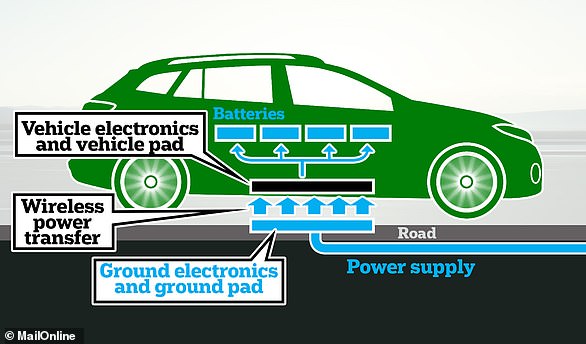Solar-powered car can drive up to 40 miles per day without needing to charge
>
Many people are put off electric cars because of how often they need to be recharged — and finding somewhere to do so can be tricky.
But this ‘range anxiety’ may soon be a thing of the past, as the first fleet of electric vehicles that harness power from the sun has just been announced.
The solar-powered Aptera ‘Launch Edition’ vehicle from Aptera Motors can drive up to 40 miles (64 km) per day without needing to be plugged in.
But such a privilege comes at a cost, as each car will be available for $33,200 (£27,000) once they go on sale, which is projected to be at the end of this year.
The solar-powered Aptera ‘Launch Edition’ vehicle from Aptera Motors can drive up to 40 miles (64 km) per day without needing to be plugged in
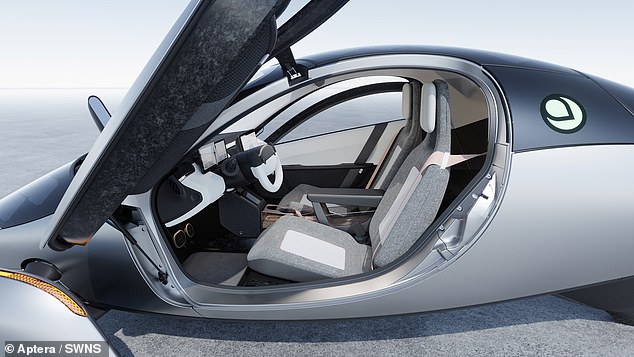
But such a privilege comes at a cost, as each car will be available for $33,200 (£27,000) once they go on sale, which is projected to be at the end of this year
The body of the futuristic three-wheeler is integrated with 34 square feet solar panels, allowing it to charge on 700 W of electricity while it drives.
Aptera Motors says owners of the Aptera Launch Edition can expect to ‘drive for weeks, even months, without ever having to plug in to charge’.
It claims that, in a particularly sunny location like Southern California, drivers may find they never have to charge their car.
The Aptera is made of six lightweight body components made from a combination of carbon fibres and fibreglass.
These fit together into a streamlined shape, reducing drag and maximising the car’s efficiency.
It also means it uses just quarter of the energy of other electric and hybrid vehicles.
This is helped by the fact it only has three wheels, as this does away a potential loss of energy.
The Launch Edition has a 42 kWh battery pack giving it a total range of 400 miles (640 km), but this will be increased to 1,000 miles (1,600 km) in later versions – the longest range of any mass-produced vehicle.
If a driver does find that they need to charge, the Aptera can plug in to any standard power outlet, and will gain 13 miles (21 km) of range for every hour connected to a standard 110V charger.
It also comes with a 6.6 kW onboard charger, which can recover 57 miles (92 km) per hear.
Each of the car’s three wheels are powered by an individual motor, giving it a total output of 128 kW (171 hp), top speed of 101 mph (162.5 kph) and the ability to reach 60 mph (100 kph) in just four seconds.
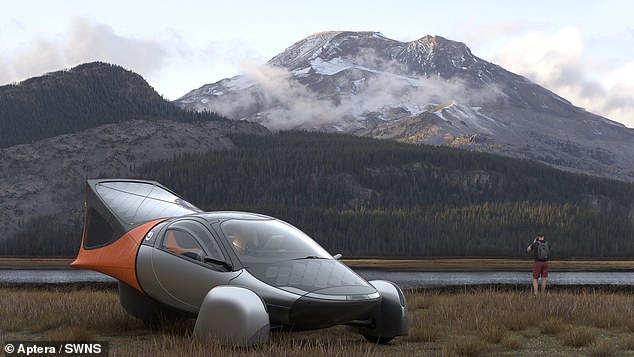
The body of the futuristic three-wheeler is integrated with solar panels that provide 700 Watts of electricity, allowing it to charge as it drives
Steve Fambro, co-founder and co-CEO at Aptera Motors, said: ‘We’ve solved the equation for a more efficient way to travel by harnessing the power of the sun, and we’re excited to introduce our Launch Edition vehicle to the world.
‘Our tireless efforts have resulted in the Aptera vehicle, that can take you where you want to go using the creative energy directly from our sun and efficiently converted into free movement.’
Aptera Motors was first founded in 2005, but was forced to shut down in 2011 after running out of money, only to be revived by its original creators in 2019.
That was when they first teased the Aptera solar-powered car, and two years later announced it wasn’t far from roll-out.
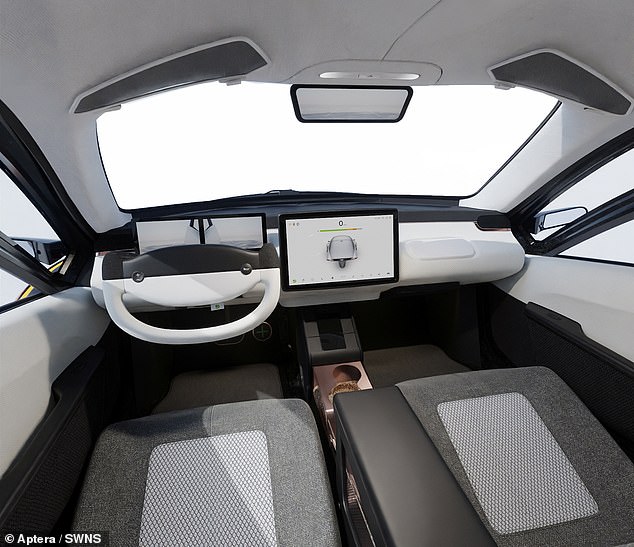
Aptera Motors says owners of the Aptera Launch Edition can expect to ‘drive for weeks, even months, without ever having to plug in to charge’
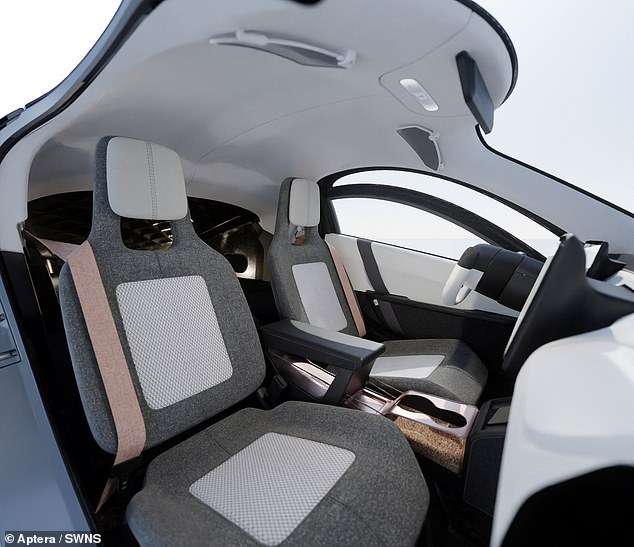
The Launch Edition will have a 42 kWh battery pack giving it a total range of 400 miles (640 km), but this will be increased to 1,000 miles (1,600 km) in later versions
However, after taking 40,000 reservations, it has yet to do so, as it is still in development.
Engineers are still completing crash tests and final checks, however the company hopes it will begin production at the end of this year.
The first 5,000 units will be these Launch Edition models, created in a production facility in Carlsbad, California, USA.
They initially aim to shift 10,000 cars each year but with a view to eventually double this output, and have eight different assembly plants operating worldwide by 2028.
Aptera Motors co-founder and co-CEO Chris Anthony says this timeline is ‘funding dependent’ and it will be more set in stone when they ‘meet [their] fundraising objectives’.
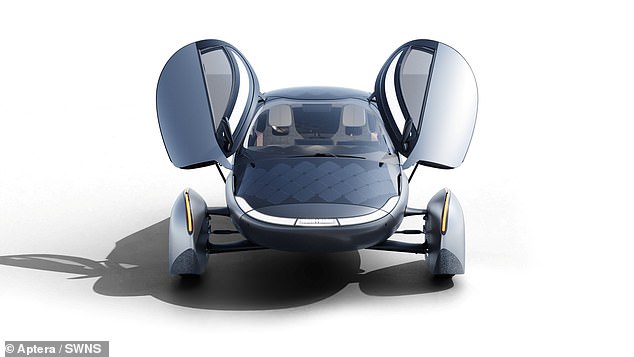
The Aptera can plug in to any standard power outlet, and will gain 13 miles (21 km) of range for every hour connected to a standard 110V charger
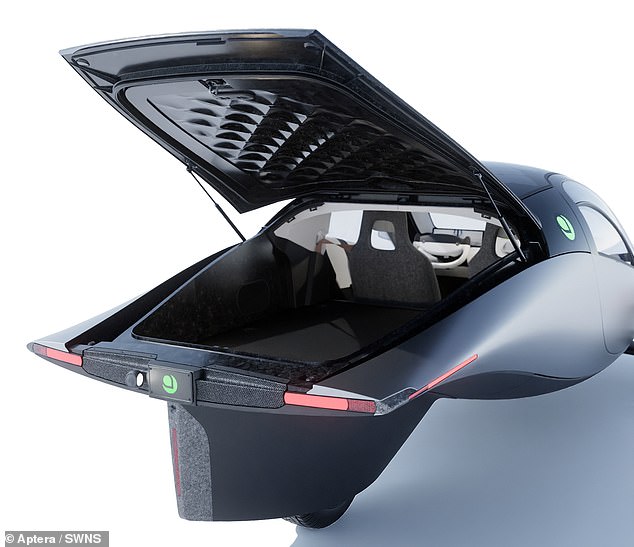
The Aptera is made of six lightweight body components made from a combination of carbon fibres and fibreglass
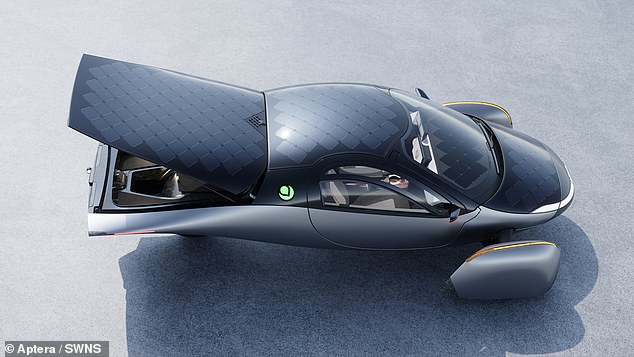
Each of the car’s three wheels are powered by an individual motor, giving it a total output of 128 kW (171 hp), top speed of 101 mph (162.5 kph) and the ability to reach 60 mph (100 kph) in just four seconds

